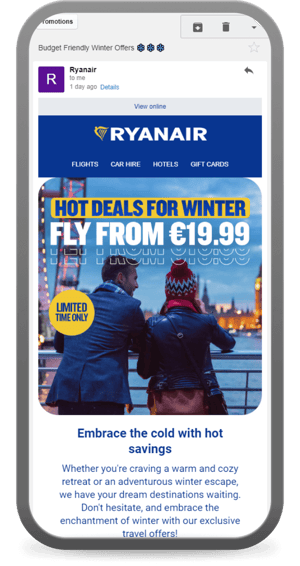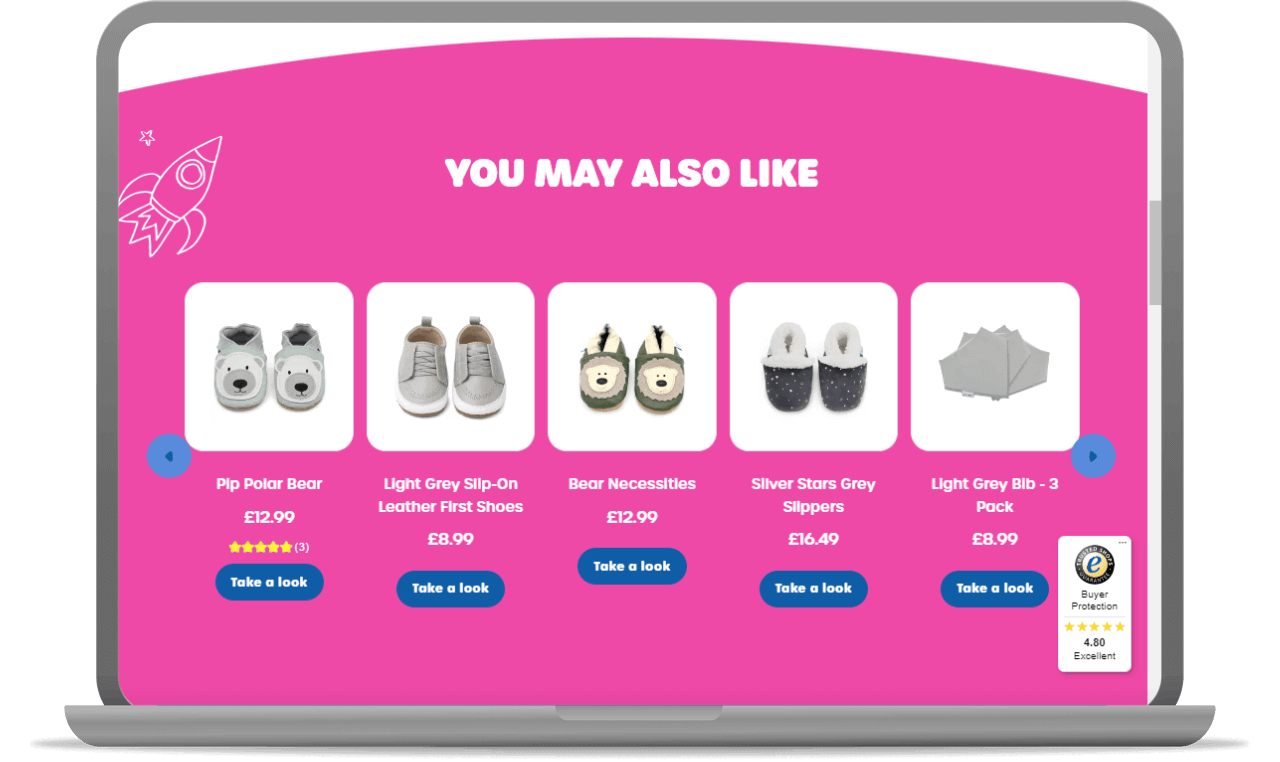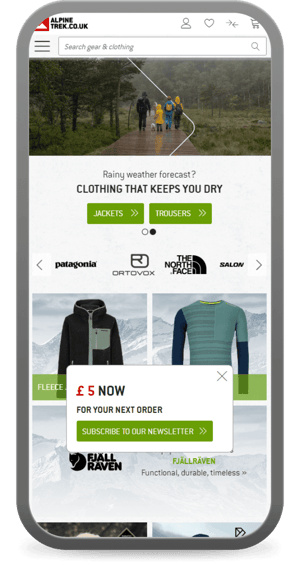SEO Tips for E-commerce: Improve Your Online Shop's Ranking in Google
SEO is an important tool for e-commerce businesses to bring in new customers. Here are the best tips for your online shop to rank higher in Google.

Personalisation throughout the customer journey that fits your consumers’ specific needs can impact both the conversion rate of your online shop as well as brand loyalty. In today’s article, we’ll look at what possibilities your shop has to personalise the customer journey.
In this article, you'll read about:
Personalisation can mean a lot of things in the world of sales.
In brick-and-mortar stores, a salesperson can personalise their approach based on the expressed needs of the shopper who entered their shop. By tailoring their offer based on the input from the customer, salespeople can dramatically increase the likelihood of the shopper completing a purchase.
Through the developments of e-commerce, businesses can, to a certain degree, recreate this experience online.
In the world of e-commerce, personalisation is a series of activities that allow online shops to create a personal shopping experience for specific, individual customers.
Recommended reading:
What is Omni-channel? The Advantages, Disadvantages, and Pitfalls
77% of consumers would choose, recommend, or pay more for a product from a brand that provides a personalised service or experience.
83% of consumers are willing to share their data to create more personalised experiences.
As you can see, customers like personalised offers and messages so much that they’re willing to invest their money and data so that you can target them with fitting content. It's worth taking advantage of!
Personalisation primarily puts the customer and their individual needs in the spotlight. Unsuitable offers not only cause irritation and quick abandonment of the website, but they can also affect your budget in the case of advertising or the number of subscribers when it comes to e-mail marketing (We’ll get into this topic a bit more later in the article).
Personalising your offer and content has two main benefits:

📷 Source: Shutterstock/Master1305
In order to get started with personalising the customer journey and your marketing efforts, you’ll need data. This can include information such as:
Most of this data can be found in Google Analytics or by using analytical tools that offer heat maps. It might also be worth presenting your customers with a brief onboarding survey when they create an account with you. This could help ensure they get the marketing messages that are relevant to them.
 Once you have a customer's email address (and their permission to use it), a world of possibilities opens up to you.
Once you have a customer's email address (and their permission to use it), a world of possibilities opens up to you.
Addressing a user by name has been a staple that has been known for years. To stand out, you need something more.
The first things that come to mind are, of course, product recommendations or abandoned cart reminders.
However, you can also use personalisation, for example, by preparing a special offer for a given customer on his or her birthday or by triggering an email X days after their most recent activity on your site.
In the following example, RyanAir uses the time of year to send winter sale reminders.
Advertising on social media gives you incredible targeting opportunities. By precisely tailoring your message to the appropriate audience, you can be more certain they'll click on the ad, and therefore, your budget will be used more efficiently.
Of course, more targeted ads can be more costly, but they can also bring in higher-quality leads. Do some experimenting and calculate the ROIs for your different campaigns.
Recommended reading:
How to Use Micro-targeting in E‑commerce
Social media is also an excellent channel for running retargeting campaigns, so you can focus on bringing back previous customers.
In addition to advertising, you can use Facebook for personalised communication with customers using their chatbot features, e.g. helping to solve a problem, providing product recommendations, or answering questions about the product range or customer service.
You can recommend products not only through e-mails and Facebook ads, but also directly on your website. Using the customer's purchase history or how they navigate the website, you can create a "Selected for you" section in which you will include products that they may also find useful.
Product recommendations can also take the form of cross- and upselling widgets (or even down-selling). By offering complementary products, you will increase the odds of them increasing their basket values.

Source: Dottyfish
 Like product recommendations, special offers can also be personalised for specific users.
Like product recommendations, special offers can also be personalised for specific users.
This may be a discount for subscribing to a newsletter, a discount for a birthday, other special occasions relevant to your niche, or after spending a certain amount of money.
To create special offers, it's worth using data about the user's purchase history or simply proposing a unique discount code.
In this example, from Alpinetrek, the homepage offers a discount for subscribing to their newsletter.
It's a win-win for customers and the shop owner. After opting into the newsletter, the shop can send them occasional offers to inspire them to return.
Has your user viewed several products, but for some reason hasn’t decided to complete the purchase? Remind them of which products caught their attention earlier. This will make it easier for them to keep track of their visits.
Otherwise, they may also be able to find the product the next time they visit your website.
You can personalise not only ads or offers, but also product prices. A dynamic pricing strategy can help you with this, adjusting product prices to market factors, time of day, or other competitive situations.
Some software allows monitoring the purchase history of a given buyer, matching the price to a new or returning customer, the device they used, or the source from which they came to your website.
You already know that collecting customer reviews is crucial when it comes to shaping your brand image and increasing conversions. Responding to them is equally important.
However, for review replies to be effective, they must sound authentic and relevant to the original comment. How do you achieve this without having to spend hours every day on this task?
The Smart Review Assistant can help you achieve this. The artificial intelligence-based tool by Trusted Shops summarises long review texts for you and also creates personalised responses, which you can then freely edit and publish with a simple click. Check out how it works:
Personalisation plays an increasingly important role in e-commerce. Creating an experience that is closest to the one that accompanies customers in physical stores is also becoming easier in this digital world. Even small things like addressing a user by their name in your communications can make a difference.
This article was originally published and translated from our Polish blog: Personalizacja w e-commerce i jej zalety
25/10/23SEO is an important tool for e-commerce businesses to bring in new customers. Here are the best tips for your online shop to rank higher in Google.
Valentine's Day has grown in popularity across Europe. We're sharing some romantic statistics (redundant, right?) and look at 9 marketing tips for V-day.